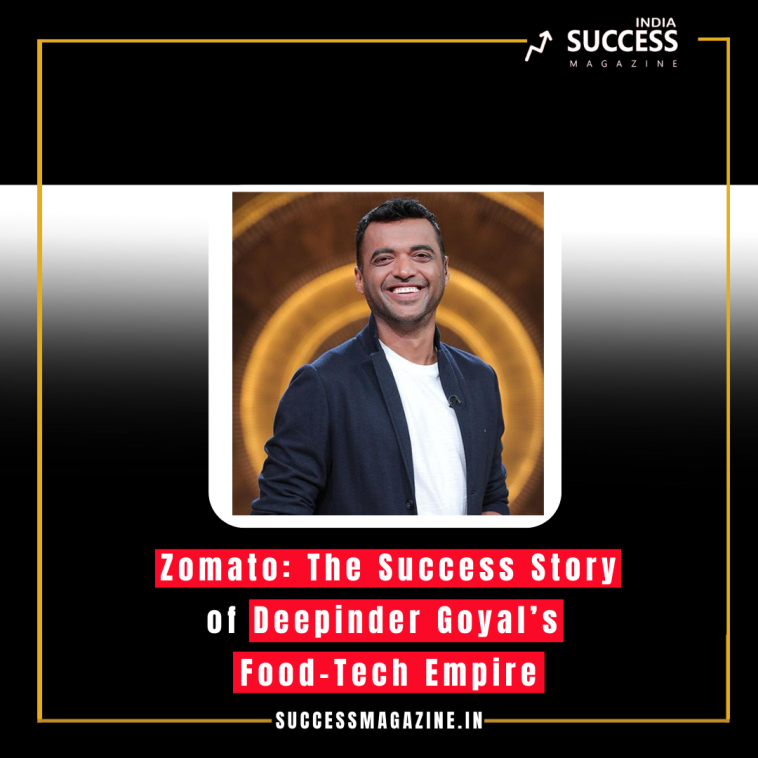Zomato, the Indian multinational food delivery and restaurant discovery platform, has come a long way since its humble beginnings in 2008. Founded by Deepinder Goyal and Pankaj Chaddah, Zomato has evolved into a global leader in the food-tech industry, reshaping how people dine, discover restaurants, and order food. The journey of Zomato is not just about building a successful company, but about innovation, resilience, and a deep understanding of consumer behavior.
The Spark of an Idea: A Simple Need
The roots of Zomato’s success lie in a simple problem that Deepinder Goyal faced during his early career. Goyal, a graduate of the Indian Institute of Technology (IIT) Delhi, was working as a management consultant when he realized that finding restaurant information, such as menus and reviews, in India was a hassle. Restaurants often didn’t have easily accessible menus online, and there was no reliable platform for discovering dining options based on reviews and ratings.
In 2008, Deepinder Goyal and his co-founder Pankaj Chaddah decided to address this problem. They created Foodiebay, a website designed to provide users with detailed information about restaurants, including menus, prices, and reviews. The concept was simple: empower consumers to make informed decisions about where to eat. This idea quickly gained traction as it resonated with food lovers and diners looking for an easy way to find restaurants.
Rebranding and Expanding: The Birth of Zomato
As the platform grew in popularity, the founders realized that Foodiebay was limiting their vision. They wanted the brand to reflect something bigger — a platform that would not only provide information but also help people discover, experience, and engage with the food ecosystem. In 2010, Foodiebay was rebranded as Zomato, a name that would soon become synonymous with restaurant discovery in India and beyond.
Zomato expanded rapidly, with the platform offering reviews, menus, and photos of thousands of restaurants across India. The user-generated content model, combined with an easy-to-navigate interface, quickly made Zomato a go-to app for restaurant-goers. People loved sharing their dining experiences, and soon the platform became a trusted source of information for millions of users across the country.
Diversification: From Discovery to Delivery
Zomato’s turning point came in 2015 when it expanded its offerings into food delivery services. While restaurant discovery and reviews were at the core of Zomato’s platform, the company recognized the growing demand for food delivery services, especially as internet access and smartphone usage grew in India. With this move, Zomato stepped into direct competition with other food delivery platforms like Swiggy.
Zomato’s strategy was unique. It leveraged its massive database of restaurant information to offer a personalized delivery service. With features like real-time tracking, extensive restaurant listings, and a smooth user interface, Zomato quickly gained a large share of the food delivery market. It also introduced Zomato Pro (formerly Zomato Gold), a premium membership that offered exclusive discounts and offers to users at partner restaurants, which further cemented the brand’s position in the market.
Global Expansion and Acquisitions
By 2015, Zomato had set its sights on global expansion. The company acquired UrbanSpoon, a US-based restaurant discovery app, which helped Zomato enter the American market. Over the next few years, Zomato expanded into over 20 countries, including the UK, Canada, Australia, and the UAE. Through strategic acquisitions and organic growth, Zomato strengthened its presence in both developed and emerging markets.
In addition to food delivery, Zomato ventured into other services such as Zomato Kitchen, providing a platform for home chefs, and Hyperpure, a supply chain venture that helps restaurants access high-quality ingredients. These moves were part of Zomato’s broader vision to become a comprehensive player in the food ecosystem, going beyond delivery and reviews.
IPO and Future Outlook
In 2021, Zomato went public with a highly anticipated Initial Public Offering (IPO) in India, marking a major milestone in its journey. The IPO was oversubscribed, with Zomato’s valuation reaching around $8 billion. This made Zomato one of the most valuable tech companies in India at the time.
Despite facing challenges like fierce competition from rivals, regulatory hurdles, and the complexities of maintaining profitability, Zomato’s leadership under Deepinder Goyal has remained steadfast. With continued investments in technology, customer experience, and global expansion, Zomato is poised to remain a dominant player in the food-tech industry.
Conclusion: A Vision Realized
The success story of Zomato is a reflection of Deepinder Goyal’s vision, hard work, and adaptability. What started as a simple idea to address a consumer need has now become a global powerhouse in the food-tech sector. Zomato’s journey is a testament to how innovation and persistence can transform an idea into a multi-billion-dollar company that touches millions of lives worldwide.
Today, Zomato stands as one of India’s most successful tech companies, helping people discover, order, and enjoy food with just a few taps on their phones. With Deepinder Goyal at the helm, the company’s future looks bright, as it continues to shape the future of dining and food delivery.


